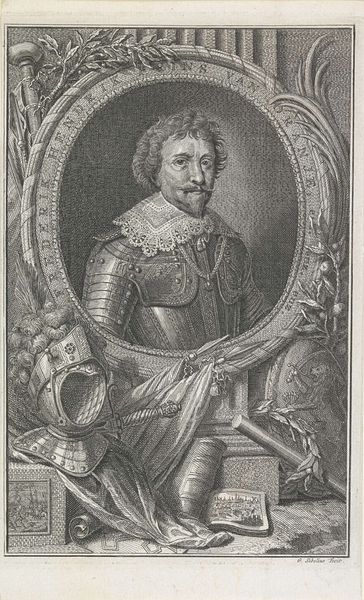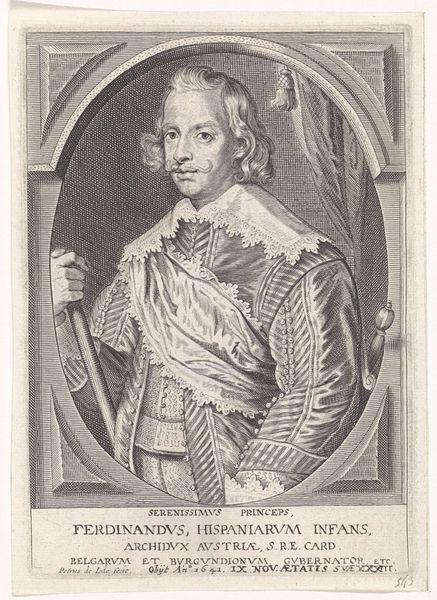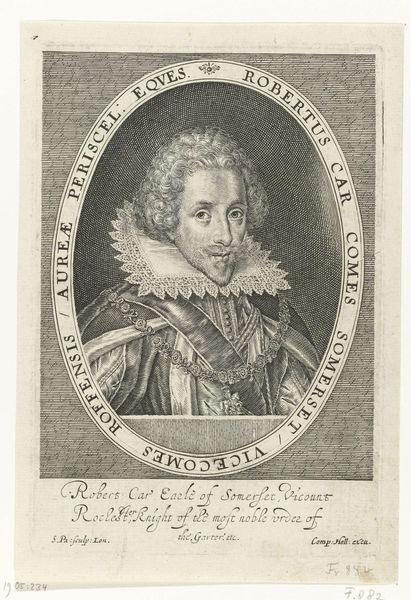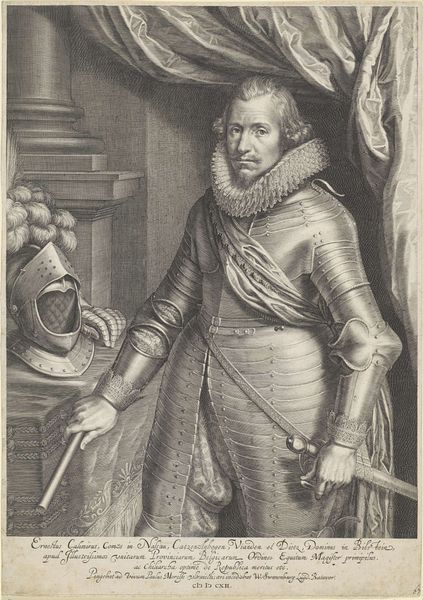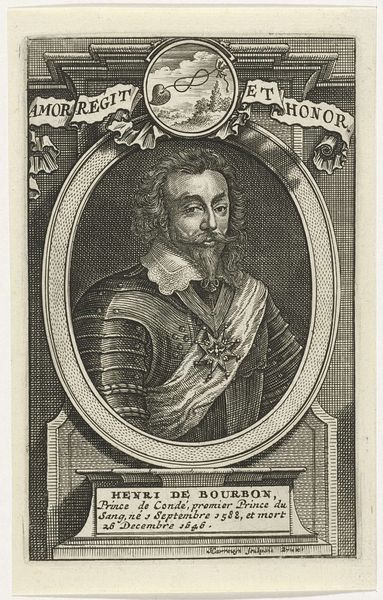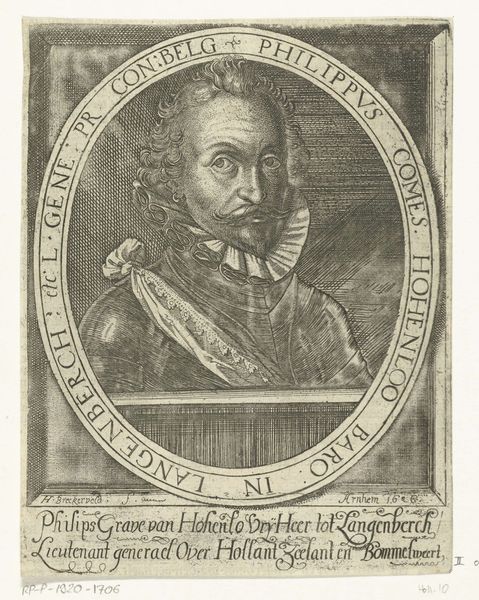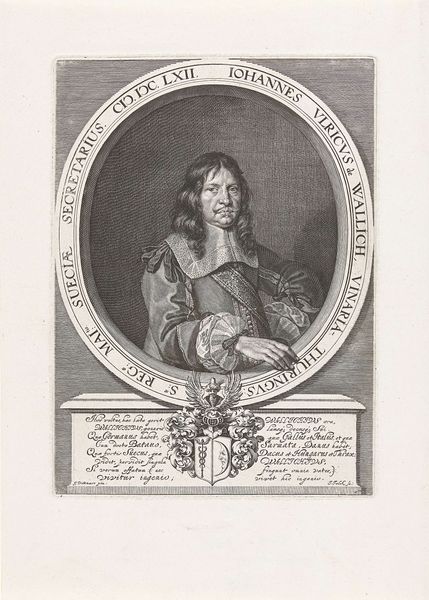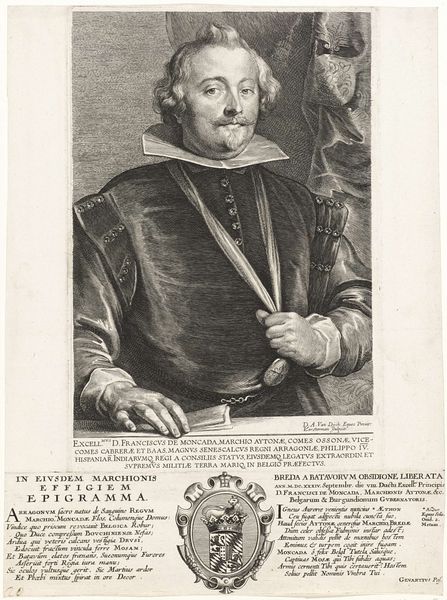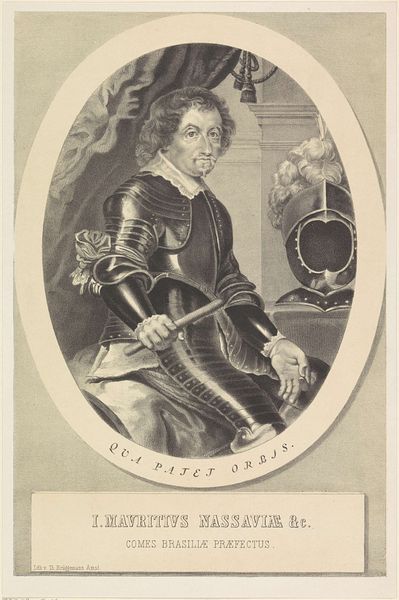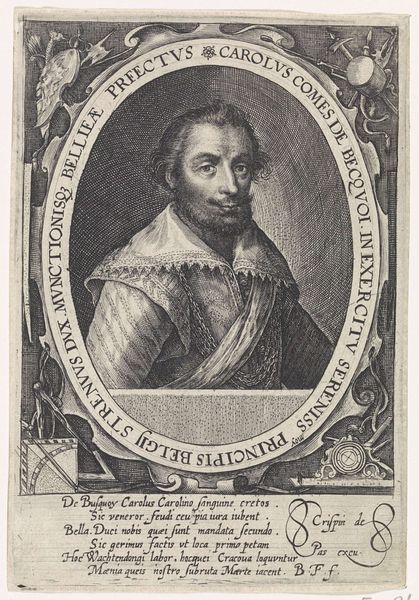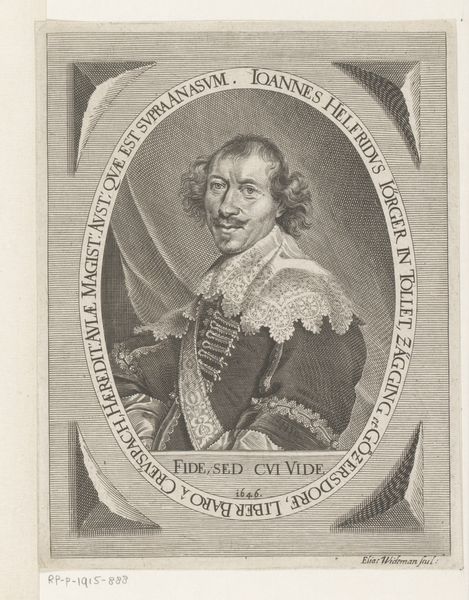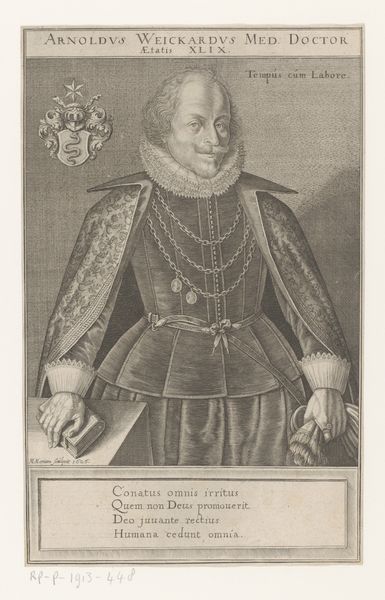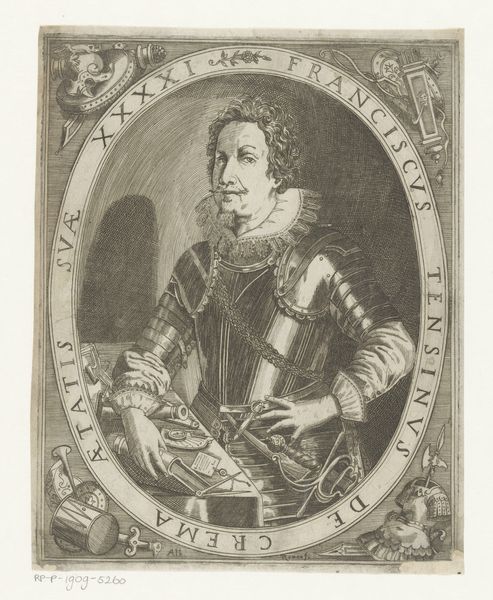
engraving
#
portrait
#
baroque
#
dutch-golden-age
#
old engraving style
#
portrait reference
#
history-painting
#
engraving
Dimensions: height 382 mm, width 249 mm
Copyright: Rijks Museum: Open Domain
Curator: Here we have Theodor Matham's engraving of Johan Maurits, Count of Nassau-Siegen, created sometime between 1621 and 1676. Editor: My initial reaction is drawn to the contrasts, the cool, almost metallic sheen of the armor against the softer, warmer tones of his face and hair. Curator: Absolutely. Matham uses engraving to meticulously render texture. It's part of the Dutch Golden Age portrait tradition, of course, but considering Johan Maurits' role as governor of Dutch Brazil, how does it complicate or support ideas of Dutch power at that time? How does his position impact global dialogues about identity and empire? Editor: While it does portray wealth and military power through those carefully etched details, what truly strikes me is the circular frame itself. Its bold lettering and deliberate placement seem to simultaneously confine and amplify the subject's presence. It’s almost an emblem of contained power, if you will. Curator: The text itself emphasizes his governance extending to "where the world lies open," right? But also, how can we ignore the uncomfortable juxtaposition? This is a celebration of a figure complicit in colonialism and slavery, carefully positioned within a burgeoning artistic market supported by wealth gained through exploitation. It is history inextricably tied to human suffering. Editor: But the cool detachment of the engraving process… the crisp lines, the controlled shading… all this elevates it, transmuting something grounded into the realm of ideal, permanent forms. Curator: Precisely, and that tension is at the heart of it. How do we reckon with the artistic achievement and formal beauty when the subject's legacy remains deeply problematic and speaks to injustice that resonates even now? Editor: It does force one to reconsider the power inherent in representational aesthetics themselves—who is given prominence, what stories are canonized, what methods allow for beauty even from painful truth. Thank you. Curator: Thank you, because that is also the role art must fulfill, even when it means sitting with the complexities and challenging perspectives.
Comments
No comments
Be the first to comment and join the conversation on the ultimate creative platform.
